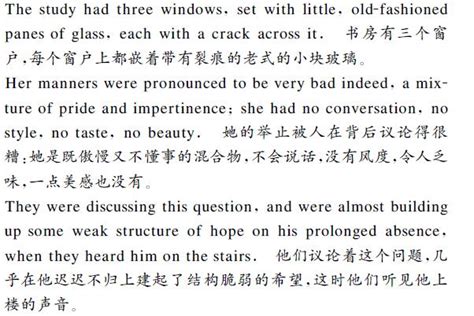初中英语诗歌素材
### Exploring the World of English Poetry and Prose Translation
#### Introduction
English poetry and prose are rich literary forms that have captivated readers for centuries. From the works of William Shakespeare to contemporary poets like Maya Angelou, English literature offers a diverse array of styles, themes, and emotions. Translating these works into other languages allows readers worldwide to access and appreciate their beauty and depth. In this article, we'll delve into the nuances of translating English poetry and prose, exploring both the challenges and strategies involved in preserving the essence of the original text while making it accessible to speakers of other languages.
#### Understanding the Challenges
Translating poetry and prose presents unique challenges compared to other forms of translation. One of the primary difficulties lies in capturing the rhythm, rhyme, and meter of the original text. Poetry, in particular, relies heavily on these elements to convey meaning and evoke emotions. Translators must strive to maintain the musicality of the language while also ensuring fidelity to the meaning of the poem.
Another challenge is the cultural and contextual differences between languages. English literature is steeped in its own cultural references, idioms, and historical contexts, which may not have direct equivalents in other languages. Translators must navigate these differences carefully to convey the intended message without losing the subtleties of the original text.
#### Strategies for Translation
Despite the challenges, several strategies can help translators effectively convey the essence of English poetry and prose in other languages:
1. **Focus on Meaning**: While it may be impossible to preserve every nuance of the original text, translators should prioritize capturing the core meaning and themes of the poem or prose passage. Understanding the author's intentions and the context of the work is essential for producing a faithful translation.
2. **Maintain Poetic Devices**: Translators should strive to retain as many poetic devices as possible, including rhyme, rhythm, alliteration, and imagery. While direct translation of these elements may not always be feasible, finding creative equivalents in the target language can help preserve the poetic quality of the text.
3. **Adapt Cultural References**: When encountering cultural references that may not resonate with speakers of the target language, translators can either provide explanatory notes or find equivalent references that carry similar connotations. The goal is to ensure that readers understand the context without disrupting the flow of the text.
4. **Collaborate with Poets**: In some cases, collaborating with poets who are fluent in both languages can enhance the quality of the translation. Poets bring a deep understanding of language, rhythm, and poetic expression, which can enrich the translated work and ensure its authenticity.
#### Case Study: Translating Shakespearean Sonnets
William Shakespeare's sonnets are renowned for their poetic brilliance and intricate wordplay. Translating these sonnets presents a formidable challenge due to their complex language and cultural references. Let's consider Sonnet 18, one of Shakespeare's most famous works:
```
Shall I compare thee to a summer's day?
Thou art more lovely and more temperate:
Rough winds do shake the darling buds of May,
And summer's lease hath all too short a date:
```
A faithful translation of this sonnet requires careful attention to both the literal meaning and the poetic devices employed by Shakespeare. Translators may choose to preserve the rhyme scheme and meter while adapting the imagery and cultural references to suit the target language and audience.
#### Conclusion
Translating English poetry and prose is a challenging yet rewarding endeavor that requires linguistic skill, cultural sensitivity, and creative ingenuity. By employing strategies that prioritize meaning, preserve poetic devices, and adapt cultural references, translators can bridge the gap between languages and bring the beauty of English literature to a global audience. While no translation can fully capture the magic of the original text, a well-executed translation can evoke the same emotions and resonate with readers across linguistic and cultural boundaries.

版权声明
本文仅代表作者观点,不代表百度立场。
本文系作者授权百度百家发表,未经许可,不得转载。








